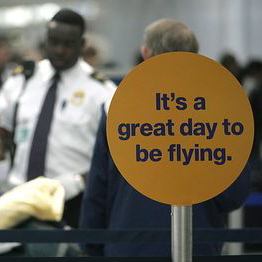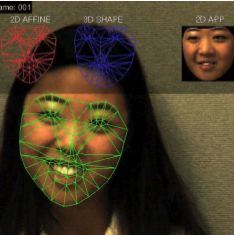Travel Tips
Full Body Scanners: Security Innovation or Personal Privacy Abomination?
 In response to the terrorist bombing attempt on Christmas Day, Dutch officials have announced that they will begin using more full body scanners for United States-bound flights.
In response to the terrorist bombing attempt on Christmas Day, Dutch officials have announced that they will begin using more full body scanners for United States-bound flights.
Security experts think that this technology could have detected the explosives Umar Farouk Abdulmutallab was concealing when he successfully boarded Flight 253 to Detroit from Schiphol Airport in Amsterdam.
But concerns have been raised that these full body scanners can reveal more than just explosives. Is improved security worth sacrificing your personal privacy?
Other countries have been hesitant to follow the Netherlands’ lead, fearing backlash from personal privacy advocates who say the images generated by the scanner are indecent and an affront to personal privacy.
 This technology has actually been available for a while, but has not been used widely in airports because people are unsure of how to feel about security personnel having access to rudimentary three-dimensional views of the body’s shapes and contours.
This technology has actually been available for a while, but has not been used widely in airports because people are unsure of how to feel about security personnel having access to rudimentary three-dimensional views of the body’s shapes and contours.
Back in June, the House voted 310-118 against using full body scanners for primary screening, limiting them for secondary screening purposes on passengers who set off the metal detector.
While the measure is being kicked around in the Senate, airports in Albuquereque, Las Vegas, Miami, San Francisco, Salt Lake City and Tulsa are testing out the machines at some gates in place of metal detectors. Those passengers who don’t want to pass through the scanners can opt for a thorough pat-down instead. The machines are also being used for secondary screenings at 13 other U.S. airports.
Learn more in our Travel Safety & Security section.
The TSA has tried to assuage the concerns of privacy advocates by pointing out that the images will be viewed by a separate officer in a private location who will never see the actual passenger. In addition, the machines cannot store, print or transmit the images.
 The companies that make the machines claim that the technology can be effective while maintaining personal privacy. For example, a couple of the machines at Amsterdam’s Schiphol airport have been fitted with a new software that produces a highly stylized image that highlights just the area where items are hidden.
The companies that make the machines claim that the technology can be effective while maintaining personal privacy. For example, a couple of the machines at Amsterdam’s Schiphol airport have been fitted with a new software that produces a highly stylized image that highlights just the area where items are hidden.
Other companies say that the technology is advancing to produce images that are as harmless as chalk outlines. They can also provide additional privacy filters, like blurring passengers’ faces.
But personal privacy advocates still maintain that the images are invasive, revealing and embarrassing for any passenger who passes through the scanner.
The Department of Homeland Security is also experimenting with other security technology, such as the Future Attribute Screening Technology (FAST) project, which screens passengers based on natural behavioral signals like pulse rate, breathing patterns, momentary facial expressions, and fidgeting. But this “hostile intent” screening system has raised personal privacy concerns of its own.
By Dan Bence for PeterGreenberg.com.
Related Links: MSNBC, New York Times
PeterGreenberg.com Links:
- 8 Years After 9/11, Is Air Transportation Really Safer?
- New FAST Airport Security Screening Technology: Innovative or Invasive?
- Airport Security of the Future
- Additional TSA Security Measures: Progressive or Oppressive?
- The Travel Detective on New TSA Regulations
- Airport Security on The CBS Evening News, O’Reilly Factor & The Early Show
What do you think? Should the need to properly secure an aircraft come at the expense of personal privacy? Leave us some comments below and let us know what you think.












